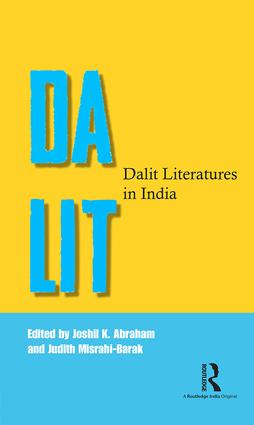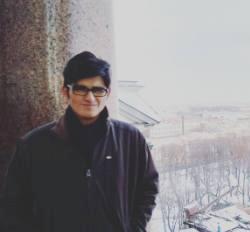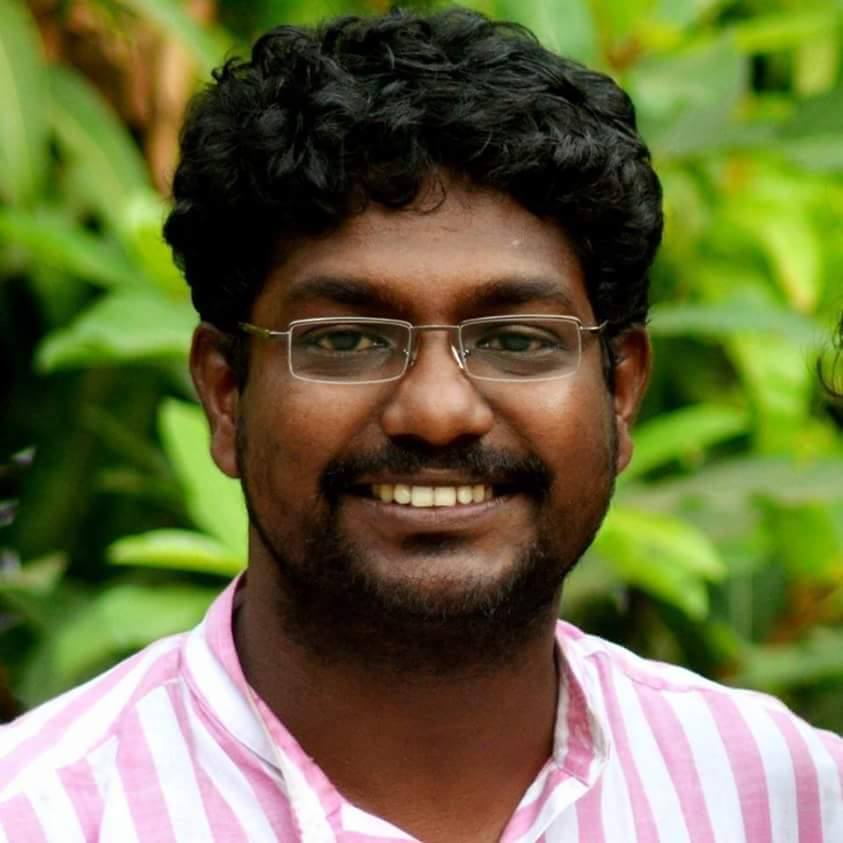Joshil K. Abraham and Judith Misrahi-Barak, eds.
Routledge India, US and UK; September 2015
350 pages, Kindle edition and Hardback ISBN 9781138891944
https://www.routledge.com/products/9781138891944
With this eclectic collection of critical essays, written from a range of positions and raising a variety of issues, it is clear that Dalit literature has come of age. — Susie Tharu, Department of Cultural Studies, The English and Foreign Languages University, Hyderabad
Short description
 Dalit mobilisation constitutes one of the major literary, social and political movements in the second half of the 20th- and 21st-century South Asia. This book breaks new ground in the study of Dalit literature, canvasing a host of literary genres including Dalit poetry, autobiographies, novels, pamphlets, short stories, testimonies, as well as Dalit art and graphic novels.
Dalit mobilisation constitutes one of the major literary, social and political movements in the second half of the 20th- and 21st-century South Asia. This book breaks new ground in the study of Dalit literature, canvasing a host of literary genres including Dalit poetry, autobiographies, novels, pamphlets, short stories, testimonies, as well as Dalit art and graphic novels.
By focusing on fiction as well as nonfiction, the volume showcases the diversity of the Dalit literary genres produced across India in several languages. It breaks new ground in the study of Dalit Literature, including in its corpus, a range of genres such as novels, autobiographies, pamphlets, poetry, short stories as well as graphic novels. It critically examines Dalit literary theory while presenting Dalit writing to a wider public for critical consideration and appreciation. It highlights the challenges in bringing this literature to the academic discourse, without losing sight of the innovative and transgressive features of the writings. In providing a range of academic perspectives, the volume encourages the reader to examine the myriad ways the narratives offer mediated representations of Dalit experience of and response to social and political injustice.
The volume engages with writers such as Namdeo Dhasal, Baby Halder, Sharankumar Limbale, Bama, Kallen Pokkudan, Manohar Mouli Biswas, Praveen Gadhvi and others. Bringing together incisive essays by renowned and emerging scholars in the field, it initiates a dialogue between Dalit writing and Western literary theory and compares Dalit writings with other forms of subaltern writings from across the world, as also explores the literatures of Dalit Muslims and Dalit Christians.
Lucid, accessible and rigorous, this book will be indispensable for scholars and researchers of Dalit studies, social exclusion studies, Indian writing, literature and literary theory, politics, sociology, social anthropology, and cultural studies.
Excerpts from the Introduction: Dalit Literatures — In, Out and Beyond
This volume springs from one simple question: how is it possible that the major political and literary development which has deeply altered the Indian academic and non-academic world as well as Indian society at large in the past three decades, has not had a greater echo outside India? More precisely, how is it possible that the literatures abundantly produced by the Dalits (formerly known outside India as ‘Untouchables’) are not better known in the Western world? Several obvious reasons come to mind. First, even in a globalised world, India does not need the Western world to forge its own literary movements, and what the West (for lack of a better phrase) takes, or does not take into account, does not matter. Second, most of these literatures are written in Indian languages, with only a minority of texts translated into other languages, including primarily English and French (one of the other main languages of translation). Several important anthologies have been published in English by major publishing houses with international distribution; but this is only recently (see final bibliography). Certain Dalit texts […] have become classics in the Indian context, and have been available for some time in English and in other languages. Yet, the attention seems to have been focused only on a few texts instead of taking stock of the general movement. The third reason for such under-exposure, or even neglect, is probably the fact that Dalit literatures do not fit in the categories that the West usually resorts to when dealing with South Asian literatures. In his introduction to Sharankumar Limbale’s Towards an Aesthetic of Dalit Literature, Alok Mukherjee signals this when he says that,
[The] work [of Dalit writers] not only does not fit into neat binaries, in fact, it complicates them by exposing how a subjugated society such as that of pre-independence India could, simultaneously, be a subjugating society and how in postcolonial India, that subjugation could continue (Mukherjee 2004: 17).
In her introduction to Omprakash Valmiki’s Joothan, Arun Mukherjee also remarks how the ‘dominant discourse of Postcolonial and Subaltern theories . . . not only refuses to notice the high caste status of these writers but presents them as resistant voices, representing the oppression of “the colonized”‘ (Mukherjee 2003: xiii). Thus, oppression in societies such as India is derived not only from the conjunction of imperialism, capitalism and colonialism. […] Dalit literatures have unsettled and decentered the postcolonial doxa, forcing us to revise some of our premises.
On the international stage, it is quite surprising, for instance, that some Western scholarseven among those who specialize in postcolonial literaturesare still unfamiliar with the development of Dalit literatures. One is finally left to grapple with the (apparent) contradiction that the tidal wave of Dalit literatures in India has not reached out in the proportions that it should have, in spite of the sustained and dedicated pioneering efforts of many writers, thinkers and academics outside India […].
Even if the widest gap associated with the production, perception, reception and analysis of Dalit literatures lies between the international context and India, other discrepancies within India itself are also striking. These are: the disproportion between the large numbers of published texts vs the small number of texts prescribed in school or university syllabi; the disproportion between primary and secondary literature; and the emphasis on autobiographies, memoirs and other testimonial narratives vs the neglect of other genres. In spite of a strong interest in the general reading public for Dalit texts, this large body of literature has not come under much critical scrutiny. […] A widespread academic movement that would take Dalit texts out of the Indian context and onto a more general analytical stage is yet to happen. Resistance to Dalit literature still seems to be prevalent, and many universities are still reluctant to promote Dalit literatures on the same terms as other literatures.
It may also be that while what used to be called Commonwealth literature in the 1960s and 1970s has eventually come to be known as postcolonial literature, Dalit literatures have so far been considered mostly as literatures that document a social, economic and political situation, and not literatures in their own rightto be studied as monument (Foucault 2007). Such literatures have often been put in the category of realist literature, whose main purpose is to illustrate and denounce the abominable situation in which Dalits live in contemporary India despite the fact that Untouchability was made illegal in the Constitution of the new Republic of India. If Dalit literatures are absolutely inseparable from the conditions of their emergence, from the socio-political and cultural contexts in which they are written, and have a purpose, it does not mean that the political erases the literary aspects of such writing. Conversely, to foreground their literary element is not to cripple the political intention of these texts. In fact, it is quite the opposite: the conviction that instead of being something different and separate, literature actually does politics (Rancière 2011) and implements it, is one that is widely shared by the authors of the essays included in this volume. […] Dalit literatures challenge hegemonic social and political forces by the distinctiveness of their discourse.
The aim of this volume is to contribute, in a very modest way, to bridging the gaps and discrepancies mentioned previously by simply taking part in the conversation that has started. It aims to bring together scholars from different continents, all of whom are interested in Dalit literatures, and want to share their knowledge with a wider audience, regardless of their origin, place of birth, or where they live. Some of the authors included here have attained international renown; others are budding scholars. All are passionate about their subject.
It is of some significance that one of the editors of this volume is Indian, and the other is French; one is a man, the other is a woman. Neither is Hindu nor Buddhist; neither is Dalit; and yet they both feel they can, and should, make their contribution against the realities, discourses, and attitudes they feel should not exist, and must be fought against and challenged forcefully. The problematic of inside and outside has been contentious: the issue of writing on or from a Dalit perspective reminds us of other debates that have taken place in the context of other literaturessuch as postcolonial or African-American literatures. It raises questions of entitlement, authorship, legitimacy and voice, appropriation and reclaiming. Whose voice is speaking? Whose pen is writing? Who has a right to speak about the Dalits and their literature? […]
Contents
Introduction: Dalit Literatures In, Out and Beyond Joshil K. Abraham and Judith Misrahi-Barak 1. Caste Differently G.N. Devy 2. Caste and Democracy: Three Paradoxes M.S.S. Pandian 3. The Politics of Dalit Literature Ravi Shankar 4. ‘No name is yours until you speak it’: Notes towards a Contrapuntal Reading of Dalit Literatures and Postcolonial Theory Laetitia Zecchini 5. The Issue of Language and its Translation in Dalit Literature Nalini Pai 6. Negotiations with Faith: Conversion, Identity and Historical Continuity Jasbir Jain 7. Resisting Together Separately: Representations of the Dalit-Muslim Question in Literature Nida Sajid 8. Creating their Own Gods: Literature from the Margins of Bengal Sipra Mukherjee 9. Caste and Literary Imagination in the Context of Odia Literature: A Reading of Akhila Nayak’s Bheda Raj Kumar 10. Questions of Caste, Commitment and Freedom in Gujarat, India: Towards a Reading of Praveen Gadhvi’s City of Dust and Lust Santhosh Dash 11. Dalit Intellectual Poets of Punjab, 1690–1925 Raj Kumar Hans 12. Life, History and Politics: Two Autobiographies by Kallen Pokkudan and the Dalit Print Imaginations in Keralam Ranjith Thankappan 13. Dalits Writing, Dalits Speaking: On the Encounters between Dalit Autobiographies and Oral Histories Alexandra De Heering 14. A Life Less Ordinary: Female Subaltern and Dalit Literature in Shining Contemporary India Martine Van Woerkens 15. Witnessing and Experiencing Dalitness: In Defense of Dalit Women’s Testimonio Sara Sindhu Thomas 16. Literatures of Suffering and Resistance: Dalit Women’s Testimonios and Black Women Slave Narratives — A Comparative Study Arpita Chattaraj Mukhopadhay 17. Polluting the Page: Dalit Women’s Bodies in Autobiographical Literature Carolyn Hibbs 18. Intimacy across Caste and Class Boundaries in Arundhati Roy’s The God of Small Things Maryam Mirza 19. Caste as the Baggage of the Past: Global Modernity and the Cosmopolitan Dalit Identity K. Satyanarayana 20. Tense — Past Continuous: Some Critical Reflections around the Art of Savi Sawarkar Santhosh Sadanandan 21. The Indian Graphic Novel and Dalit Trauma: A Gardener in the Wasteland Pramod K. Nayar.
[Via Mudnakudu Chinnaswamy]










